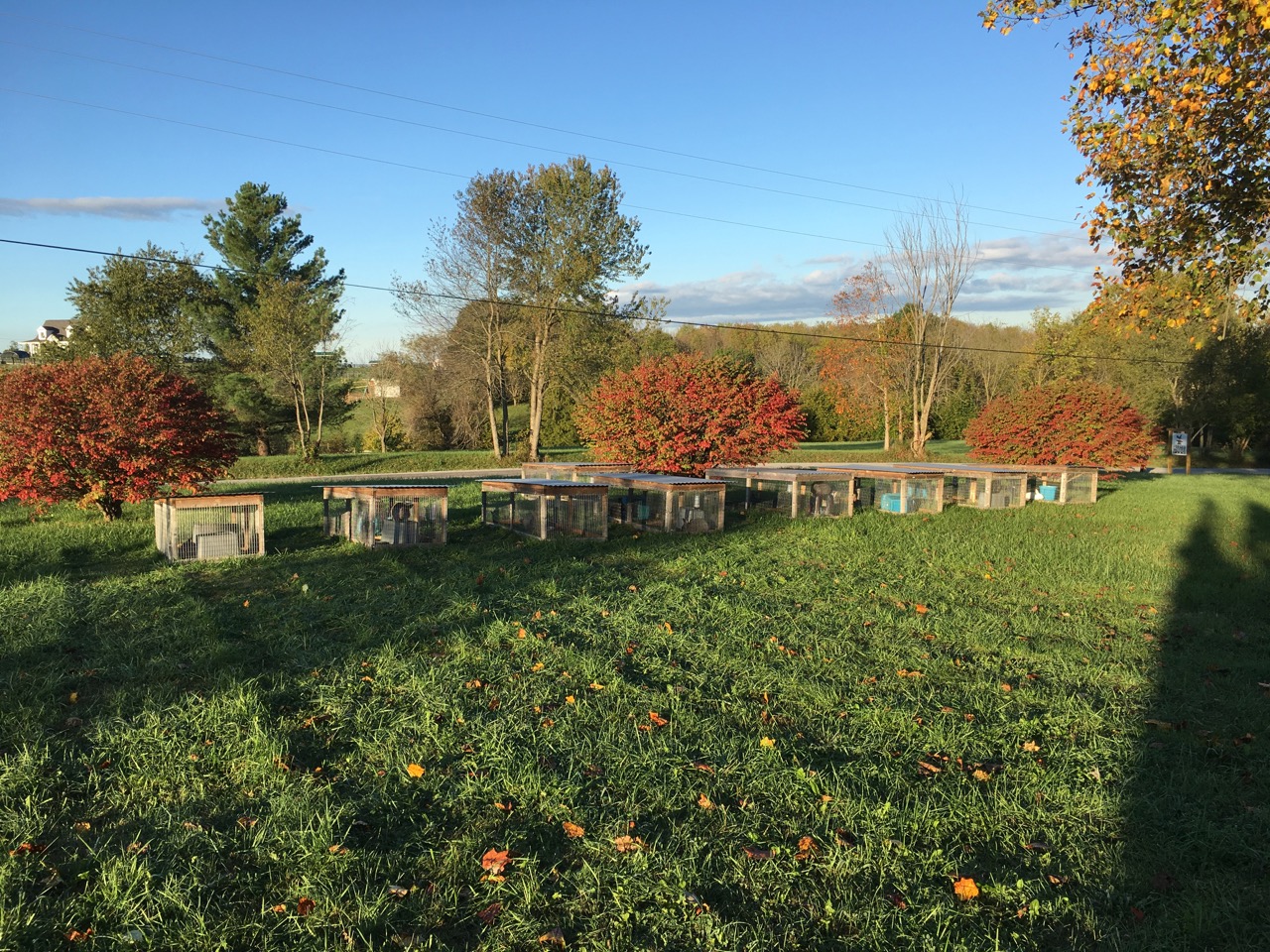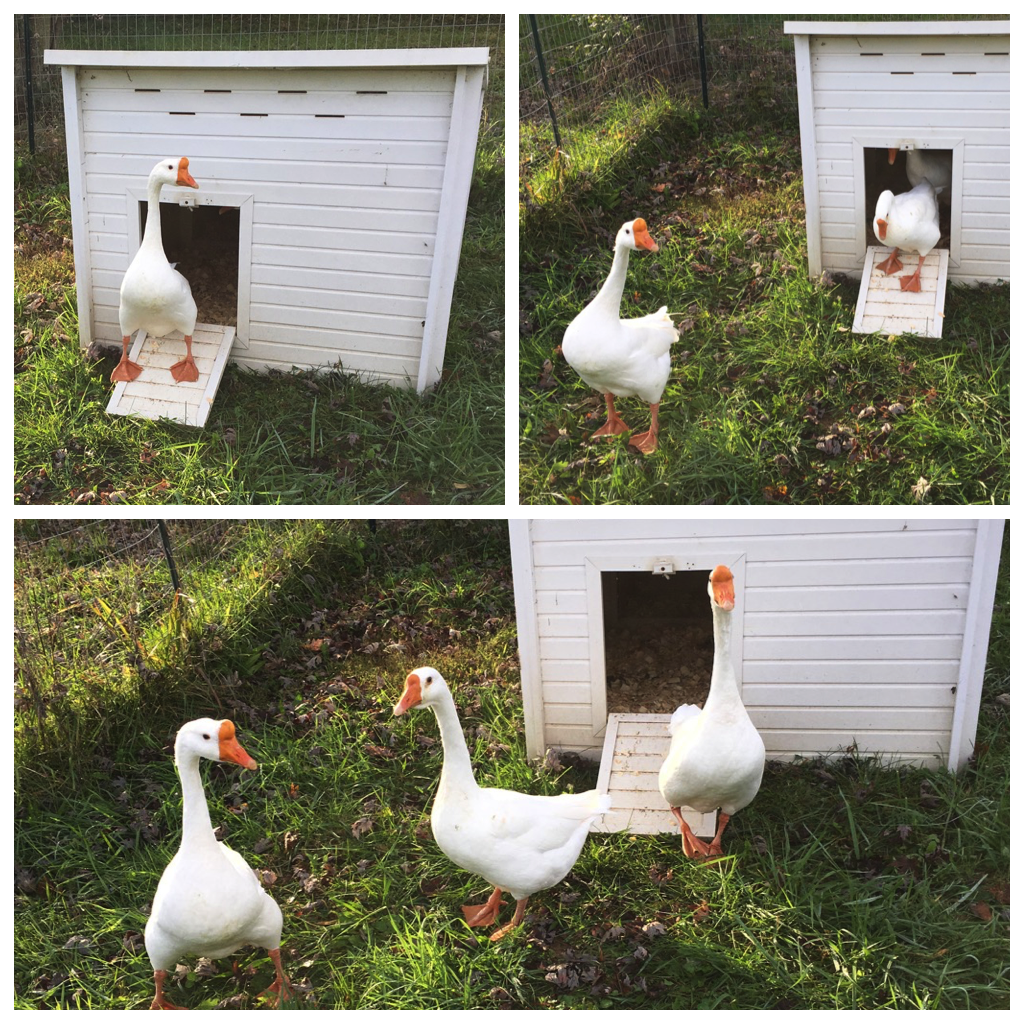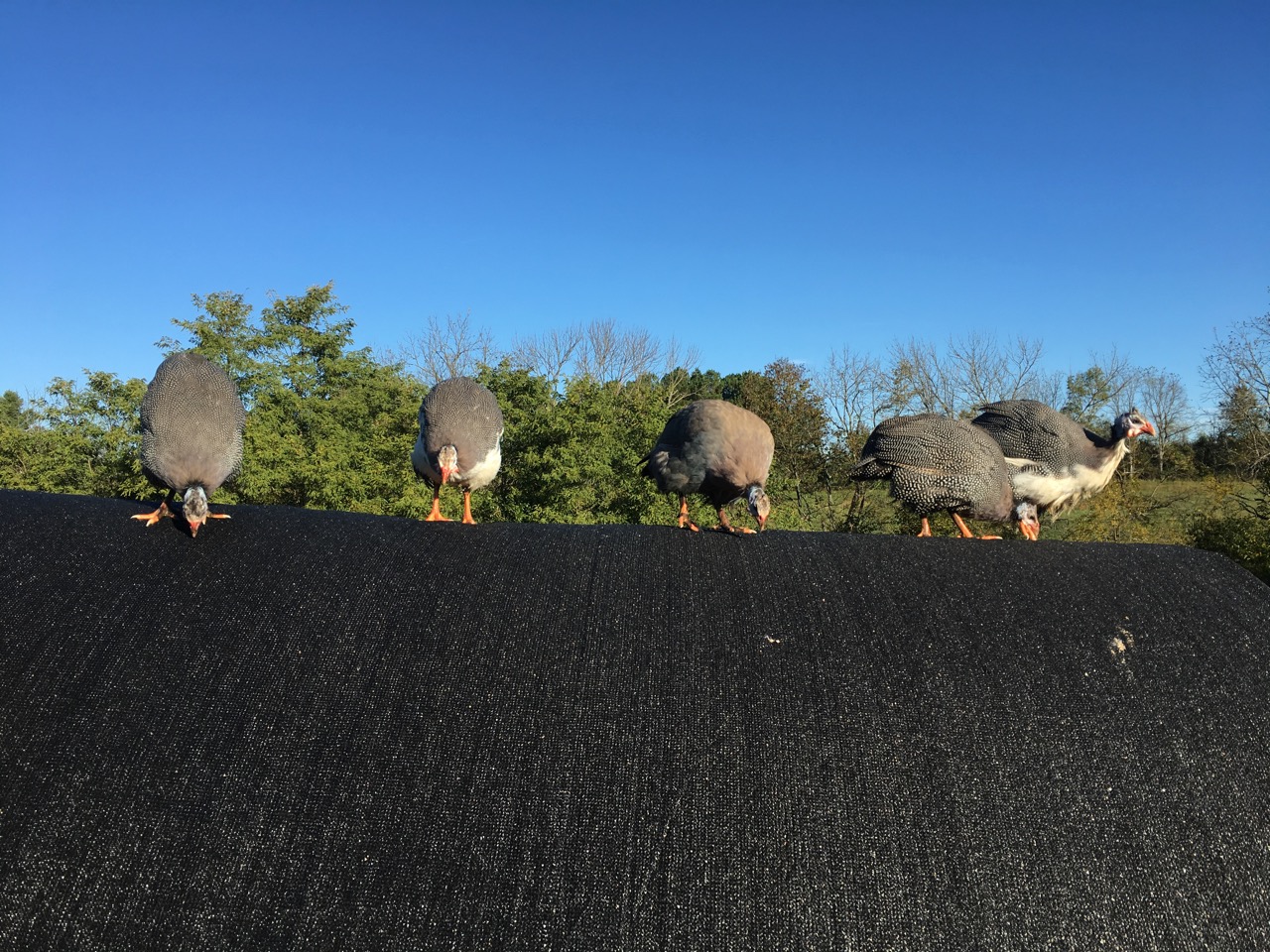
Well, it’s become clear that summer is over and winter is nipping at its heels: we’ve seen frost in the morning. The temperatures at night have gotten down into the low 30’s (from recent 60’s) and daytime temps are only in the mid-40’s to low-50’s. Shorts and flip-flops have been put away for another season and thermal underwear are at the ready! The change in weather means changes around the farm, too, for the health and happiness of the animals.
The precipitous drop in the mercury shortened the timeline to move the Cuckoo Marans pullet group (ten 14 week olds) into the main coop with the rest of the laying flock. We had hoped to wait until they were 16 weeks old, but the girls are nearly the size of the adult hens, with big attitudes to match.
As we normally do, we waited until dark and transported the pullets to the main coop, placing them on the roost. Since it was dark and quiet, there was very little commotion despite the presence of the new arrivals. The next morning, the hens rushed out for breakfast and the pullets were nowhere to be seen. A check of the coop showed that they were all still in there, hiding in a corner under the poop board. This isn’t unusual behavior – it sometimes takes a while for the new girls to find their place in the pack. Another week or two and they’ll be part of the torrent of birds that pours out the coop when the pop door is opened in the morning!

The geese have been temporarily housed in the barn, in a fenced enclosure, but we wanted them to be in a fully secure and warmer housing situation before the really cold weather is upon us; fortunately, we had a big Fontana Eco-Flex coop that was vacant and was tall enough for the geese to comfortably fit inside. We herded them into the new pen to facilitate ushering them into the coop, and with just a little hesitation (it is something new, after all), they all went inside. The next morning, when we opened the door/ramp, Bo was the first out, followed by Daisy and then Luke. It’s been a few days since the move and they know to head that way at dusk and are easily herded inside. Maybe…just maybe…they’ll go into the coop by themselves one day.

The group of five guinea fowl has also been moved into a nighttime coop…but now it’s a group of four. One of the guinea hens mysteriously started limping, so we moved her into a cage to observe her and restrict activity. An examination failed to reveal a wound or obvious injury, so we concluded that she may just have strained or sprained her leg. After a couple of days, she seemed to be walking normally again, so we attempted to re-integrate her with her hatch-mates. Unfortunately, they didn’t welcome her back; instead, they picked on her and she began avoiding the group – and a solo bird is a vulnerable bird. Fortunately, we had another, slightly younger, group of three guineas that were not yet free ranging; we added her to the mix, and once they all became acquainted, they got along famously, so she has become the last member of another group of four. In a few weeks, this group will also be allowed to free range during the day.
Other integrations: the slightly younger group of American Bresse/Black Copper Marans cockerels was successfully integrated into the group of four older AB/BCM cockerels and after some initial bullying by the older cockerels, the entire group seems to be getting along well. The AB/BCM pullets remain in their own tractor because they’re too young and small to put into the main laying flock right now, and the boys were too interested when the girls were briefly placed into the tractor with them. Finally, the BCM cockerel that was hatched with the younger group of AB/BCM chicks was briefly placed into the tractor that had the Cuckoo Marans and AB/BCM pullets, but he ended up being picked on by the pullets, so he was integrated with the two much-younger BCM chicks from the last hatch, and they’re all doing well together. The older, much larger, cockerel seems to think he’s the chicks’ protector, too – he’ll take a peck at a hand reaching for the little ones. While we wouldn’t normally try to integrate birds of such different sizes and ages, we figured it was worth a try because (1) he had already established that he has a pretty mellow personality and (2) if successful, it would save the cockerel from the loneliness of being isolated in a cage. Sometimes these attempts do work out!
Change is usually unwelcome, and animals (like people) may try to resist it. It takes a while for the group dynamics to work themselves out when integrations occur, but most integrations will do just that: work themselves out. Sometimes, there’s bloodshed – the most serious injuries we’ve seen have been pecked combs, but we have read accounts of integrations where birds suffered much more serious injuries, or were killed. Chickens, in particular, have a rigid hierarchy, and really can be pretty mean to each other, so care is needed when doing an integration.
While it wasn’t without its challenges, the week’s activities were necessary: it brings us peace of mind to know that the geese and the guineas are completely secure at night; the newly-added pullets will bring additional warmth to the coop through their body heat (and may also begin laying soon); and the cockerels are either all together in a large tractor or with two smaller companions (probably good for the cockerel’s ego, and friends are important to chickens, too). When the truly freezing cold weather arrives (snow is actually in the forecast for tomorrow), we’ll all be ready for it. It’s a good thing we’ve been keeping in shape because we’ll soon be lugging 5 gallon buckets of water out for the animals, in addition to the feed buckets!
